A total of 42 horses have died at the Grand National festival since 2000.
Opponents to the contentious three-day competition have labelled it "grotesque" and "basic cruelty", but organisers say that the "welfare of participants is paramount".
The Crabbie's Grand National Festival begins Thursday, with the biggest race of the competition taking place on Saturday.

The event divides public opinion, but with 40 horses due to jump 30 fences over a course that spans nearly four and a half miles on Saturday, there is no doubt that the Grand National is the most gruelling course in the British racing calendar.
According to Animal Aid's statistics, between 2006 and 2015 only 155 runners finished the race out of 399.
Horses are required to make 30 jumps. Fourteen fences are jumped twice, with fences 15 and 16 being jumped once.
Becher's Brook is the race's most notorious fence and deemed "most lethal" by animal rights advocates.
Fence 4, Canal Turn, Valentine’s Brook and The Chair also prove particularly challenging to horses.
The graphic below shows the "deadliest" fences in the Grand National race, as recorded by Animal Aid.
Below the graphic is a breakdown of examples of horses who have died at the fence and why the jump is so challenging.
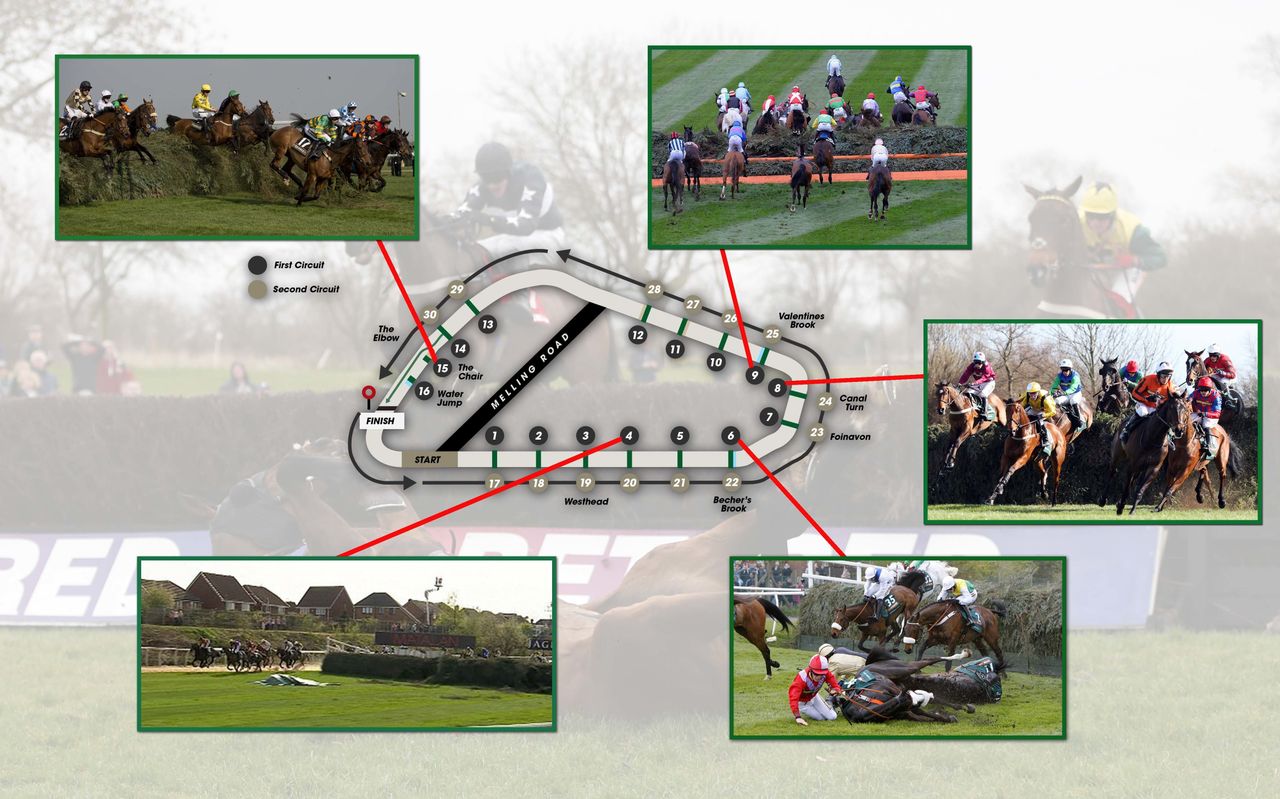
The 'deadliest' fences listed by Animal Aid:
Fence 4 (& 20) - 5 horses have died in 50 years.
Examples of fatalities:
Ornais: 2011 – Fell and died instantly from a broken neck
McKelvey: 2008 – Ran loose after falling at this fence and was subsequently destroyed.
Other deaths: Manx Magic, Do Rightly, Smith’s Band.
Why this fence is so challenging:
Animal Aid describes this as the "most underestimated fence with regards to its high fatality rate". It is not clear why it is so "deadly".
Fence 6 (& 22) - Becher’s Brook - 10 deaths in 50 years.
Examples of fatalities:
According To Pete: 2012 – Broke his shoulder when landing upon a fallen horse at this fence. Synchronised: The Gold Cup winner fell at this fence in 2012 before sustaining a hind leg break as a consequence of running loose.
Dooney’s Gate: 2011 – His back was broken after he fell and was hit by another horse.
Other deaths: Alverton, Winter Rain, Dark Ivy, Brown Trix, Seeandem, Eudipe.
Why this fence is so challenging:
The fence's positioning and its angle are both problematic for horses, according to Animal Aid. The fence is angled and is not jumped head-on. Jockeys also tend to steer their mounts to the nearside, accentuating the angle to be jumped even more.
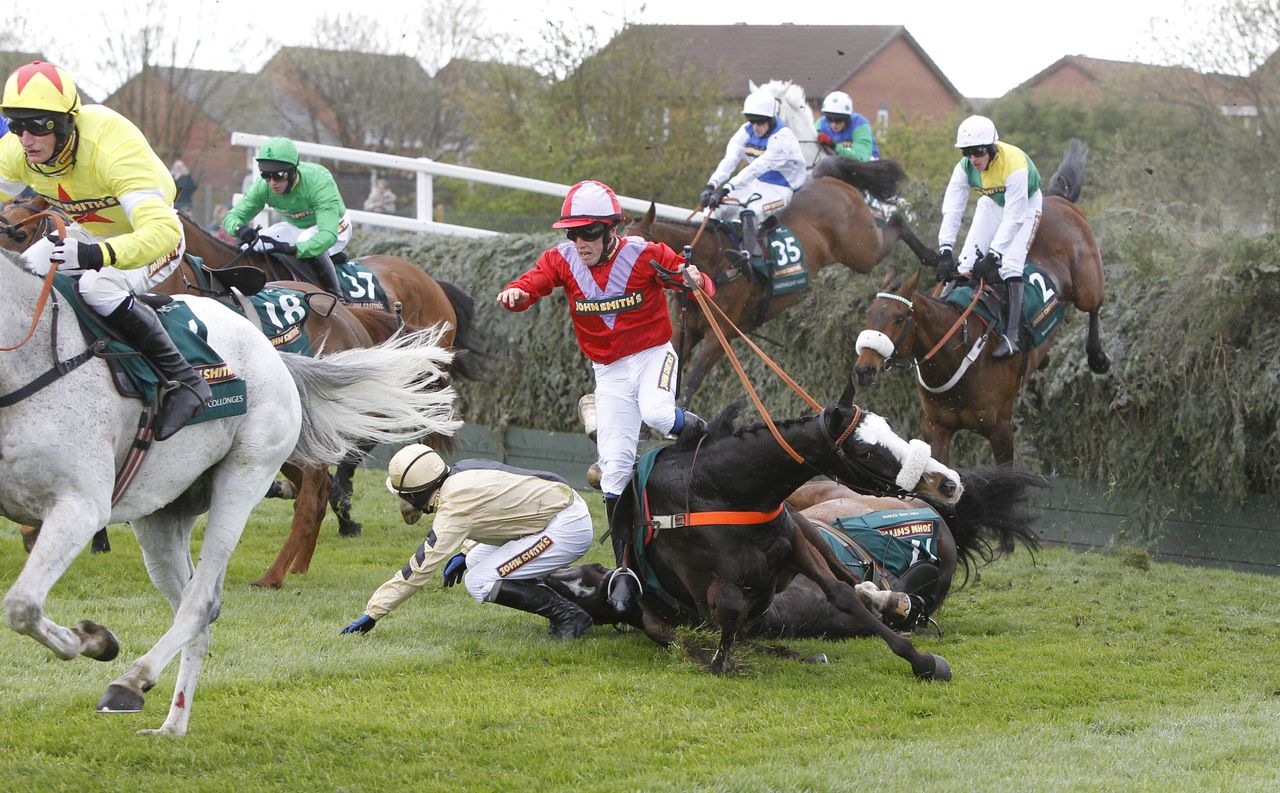
Fence 8 (& 24) - Canal Turn
Examples of fatalities:
The Last Fling: 2002 – After leading the field for the majority of the race, this tired horse was killed falling at this awkward 5ft-high fence.
Roll A Joint: 1990 – A Scottish Grand National winner, he took a deadly fall here on the first circuit.
Why this fence is so challenging:
The course takes a challenging 90-degree turn immediately after this fence. This causes crowding in the approach, as jockeys fight for an inside berth.
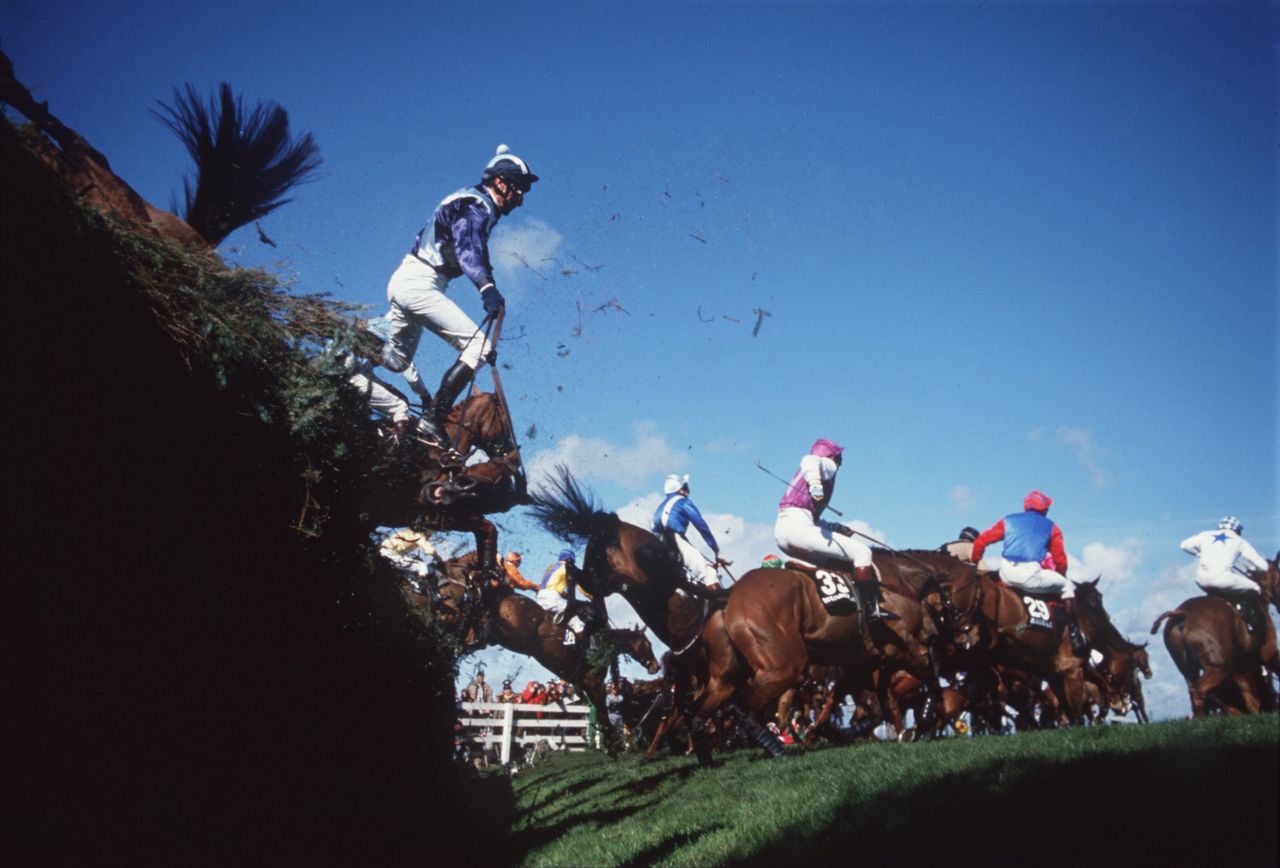
Fence 9 (& 25) - Valentine’s Brook
Examples of fatalities:
Animal Aid says 'many horses' have been killed here.
Zeta’s Son was killed at Valentine’s Brook in 1977.
Plaisir D’Estruval and Prudent Honour broke their necks in simultaneous falls in 2010 during the Topham Chase, which is run over the Grand National course.
Why this fence is so challenging:
This is a 5ft-high fence, with a ditch and a drop of 5ft 5in on the landing side.
Fence 15 - The Chair
Examples of fatalities:
Grey Sobrero, Land Lark, Kintai.
Why this fence is so challenging:
This is the highest fence on the course at 5ft 2in. It is also the narrowest. A 6ft-wide ditch immediately precedes it. Its total spread is 11ft.
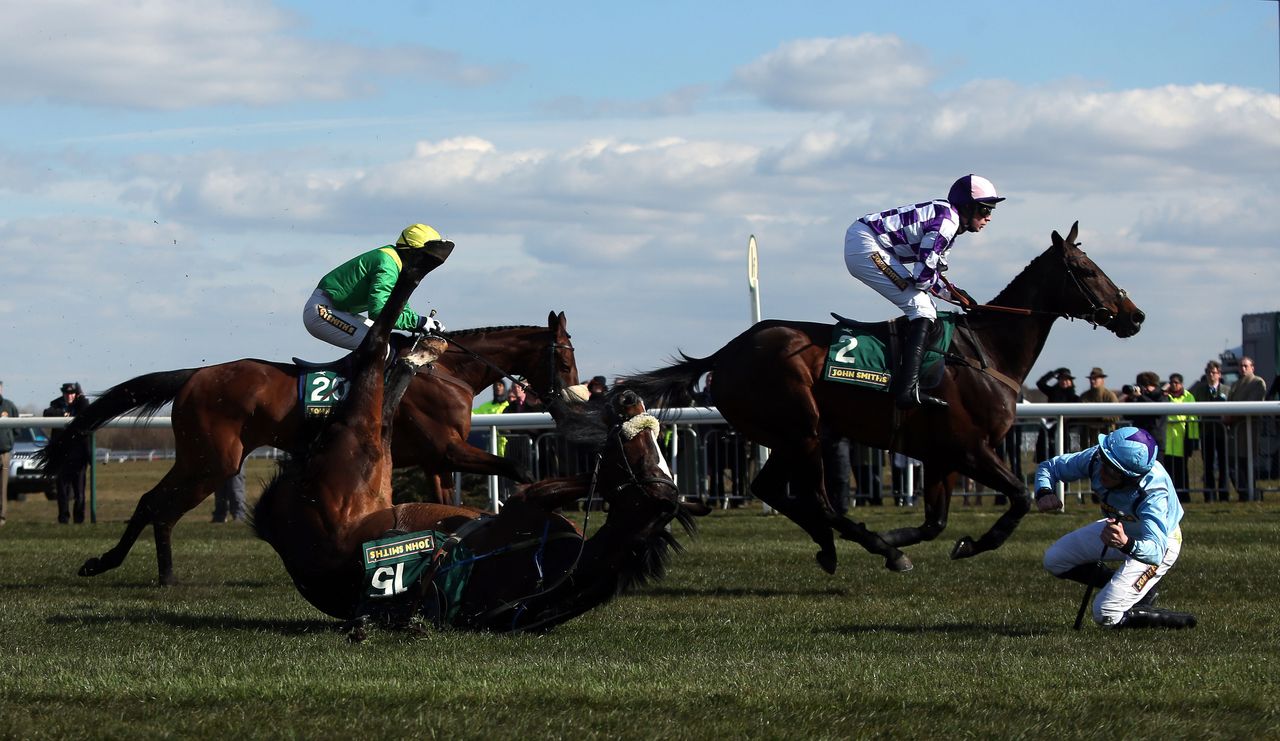
Dene Stansall, Animal Aid's horseracing consultant, told the Huffington Post UK that the Grand National, which began in 1839, is "constantly killing horses", with more dying in the past 50 years than in the rest of its history.
He attributes this in part to a rise in the number of horses participating in the event. Up to 40 horses ride in the Grand National. There was a time when there used to be about 27 equines racing at any one time.
"More horses are running now than ever before," Stansall said.
In addition to the fences and the number of runners in the race, the horse racing expert also lists the distance of the course as a major concern.
Fewer than half the horses running the Grand National have finished the course in the last 10 years.
Stansall said that the fact that only 39% of runners finish the race "clearly shows that there is a problem".
Animal Aid statistics show that 42 horses have died at the Grand National meeting since 2000.
The figures include horses who died on the racecourse and those who died of their injuries shortly afterwards having been removed from the course.
The only years to see no fatalities were 2004 and 2014.
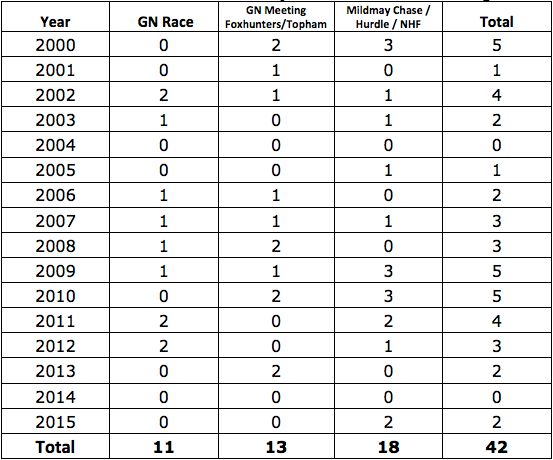
Aintree has modified the fences, making them less rigid in recent years. This has seen a decline in the number of equine deaths.
Yet opponents to the National maintain that the course "epitomises all that is wrong with the racing industry", as it "glorifies the falls of the animals".
The notorious Becher's Brook is advertised on the Grand National's website as being the "most thrilling and famous fence in the horse racing world".
"The fence actually measures well over 6ft on the landing side, a drop of between 5 and 10in from take off.
"Horses are not expecting the ground the disappear under them on landing," the website states.
Stansall criticised race organisers for promoting the thrill of these "dangerous" jumps, specifically Becher's Brook.
He said: "Horses jump from a high point, which throws off their central balance and the fences are very hard and stiff and are awkward angles.
"TV promotes these falls and spills, which is grotesque in this day and age. It's basic cruelty.
"The Grand National epitomises all that is wrong with the races. Horses are brought to their knees and break their legs, neck, back and shoulders."
Supporters of horseracing argue that the animals are well looked after and that equines choose to run naturally.
But Stansall argues that, regardless of whether or not a horse is treated well, that cannot justify the injuries - and sometimes death - they will succumb to during the race.
He said: "Whether it’s looked after or not, if you have got horses with a broken back lying on the race course there’s no excuse. It doesn’t wash with me at all."
Addressing accusations that horses would choose to run in their natural environment, Stansall said: "They would not be asked to jump fences with a person on the back hitting them with a whip.
"This idea that horses love racing and they run, well that isn’t really a natural state to have a saddle and jockey and a whip jump over big fences."
The British Horesracing Authority (BHA) said that it "works closely with recognised welfare organisations", such as the RSPCA, World Horse Welfare and British Horse Society.
The BHA said in a statement that Animal Aid's aim to "ban horseracing" would have a "disastrous impact on the thoroughbred as a breed, effectively wiping it out".
The BHA added: "The welfare of participants is paramount to everyone involved in British Racing. Owing to the work of the BHA and Aintree racecourse a series of modifications have been made to make the Grand National course safer.
"Since new fence designs were introduced there has been no fatalities in the Grand National and there has only been one fatality from 261 runners at the Aintree fixture in the last two years, including all ten races run over the Grand National course."
But many see the Grand National as part of a much bigger problem, with hundreds of animals dying every year on British race courses.
Horse Death Watch, a website set up by Animal Aid, records every on-course thoroughbred fatality in Britain.
In its tenth year, the website has listed more than 1,370 horse deaths in 3,312 days.
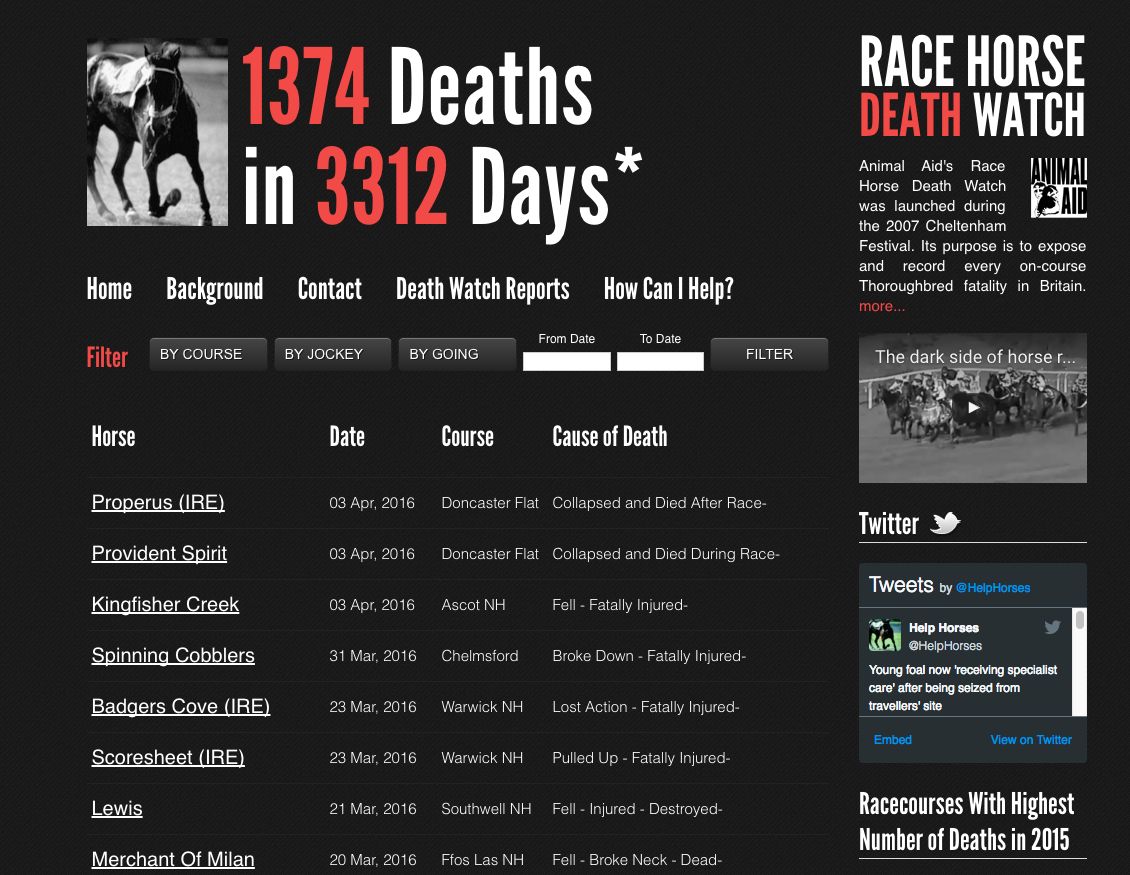
Started during the Cheltenham Festival in 2007, Horse Death Watch is a unique website as it lists the names of killed horses, where the fatality occurred, who was riding the horse and the nature of the injury.
The website states: "Deaths on racecourses are just one part of the sorry story to be told about commercial racing.
"Animal Aid's extensive research over many years demonstrates that the industry treats thoroughbreds as mere reproducible commodities.
"It kills or dumps thousands every year when they fail to make the grade or when their racing days are over."
Cheltenham Festival faced a backlash last month when it became the deadliest year in a decade.
Seven horses died during the four-day event in Cheltenham, renewing concerns that the equines were "disposable commodities" in the world of racing.